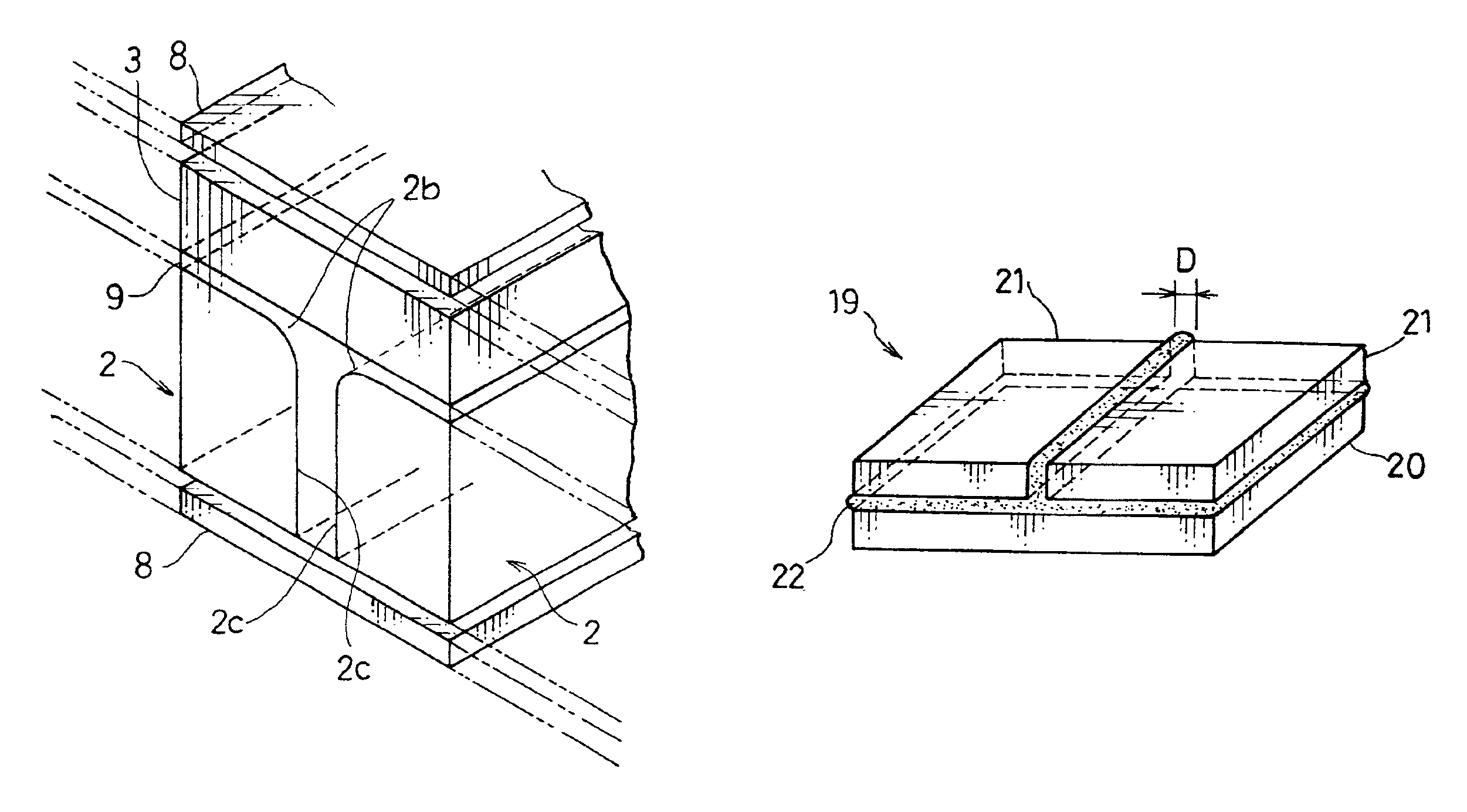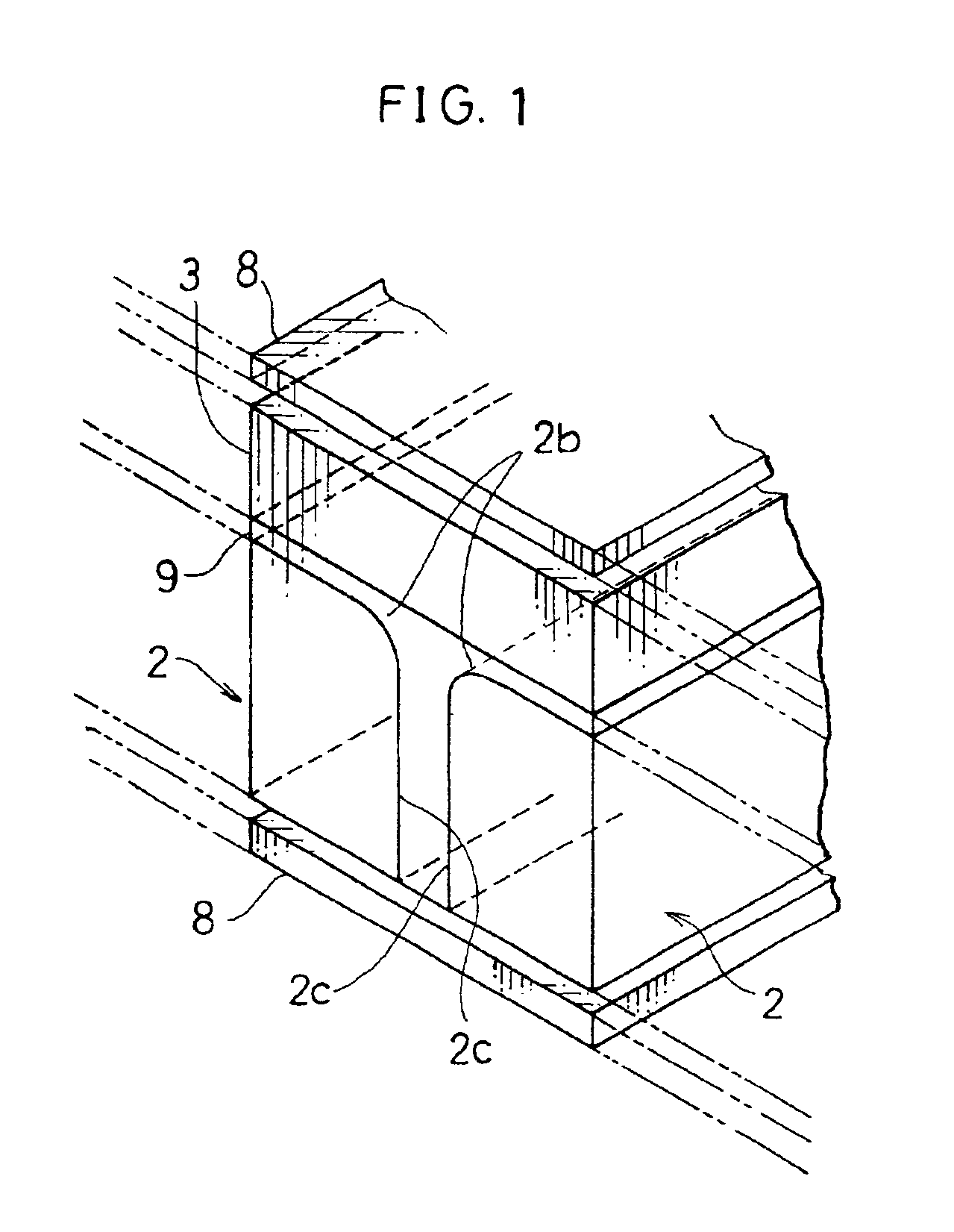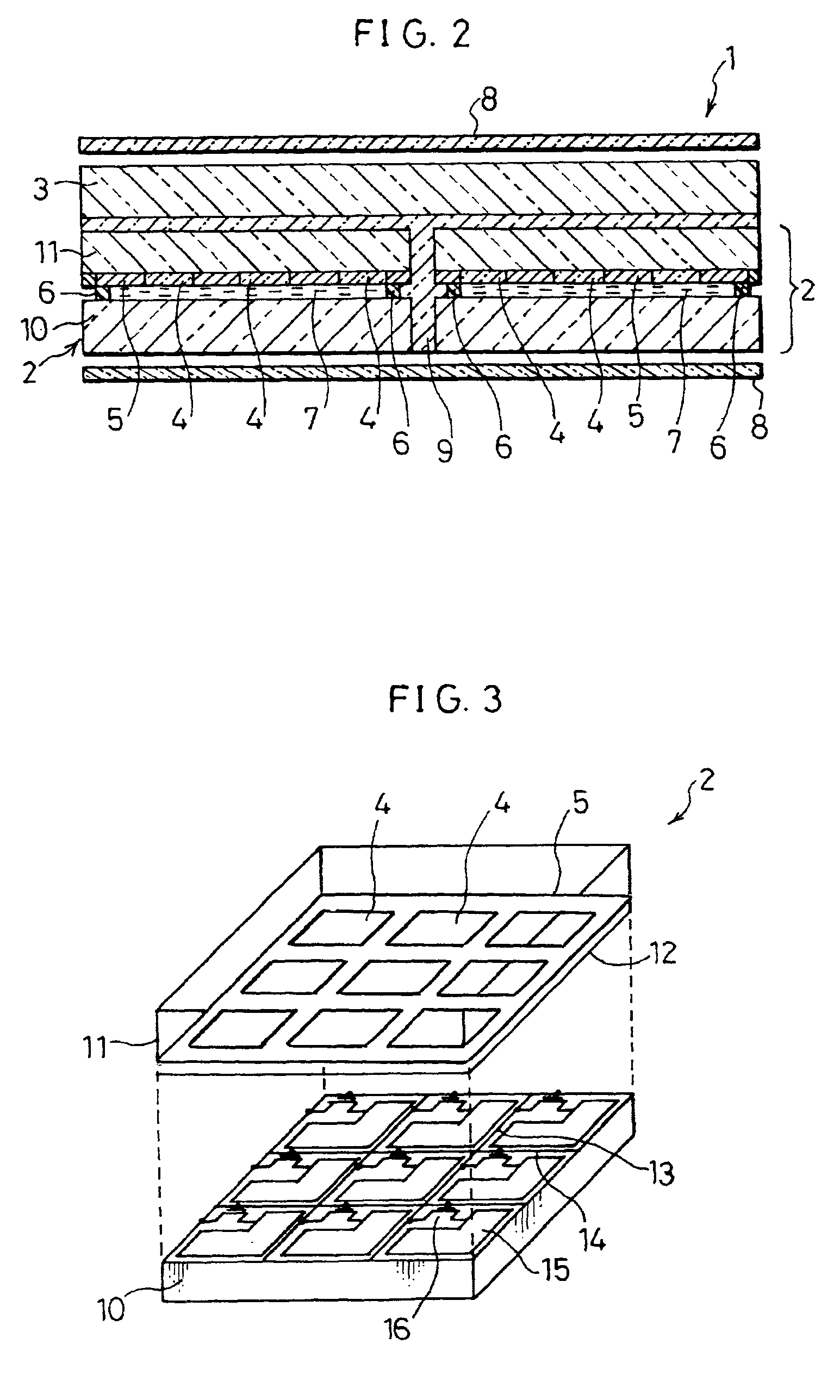Display device utilizing a plurality of adjoining display panels to form single display screen and methods related thereto
- Summary
- Abstract
- Description
- Claims
- Application Information
AI Technical Summary
Benefits of technology
Problems solved by technology
Method used
Image
Examples
first embodiment
[0045]The following descriptions will discuss one embodiment of the present invention in reference to FIG. 1 through FIG. 4.
[0046]As shown in FIG. 2, a liquid crystal display device 1 in accordance with the present embodiment is of the direct sight type. The liquid crystal display device 1 includes liquid crystal panels 2 of an active matrix type provided on one surface of a reinforcing substrate 3 of an sufficient size to entirely cover the display screen of the liquid crystal display device 1. The liquid crystal display device 1 also includes polarization plates 8 (to be described later) which sandwich the reinforcing substrate 3 and the liquid crystal panels 2 in-between, a back light (not shown) such as a cold cathode gas discharge tube, for directing light onto the liquid crystal panels 2, and a driver (not shown) for driving the liquid crystal panels 2 based on the image information for displaying an image. The back light is provided on an opposite side to the reinforcing subs...
second embodiment
[0064]The following descriptions will discuss another embodiment of the present invention in reference to FIG. 5 through FIG. 8. For convenience in explanations, members having the same function as the aforementioned embodiment will be designated by the same reference numerals, and thus the descriptions thereof shall be omitted here.
[0065]FIG. 5(a) is a plan view showing a cutting position for a part to be connected in the process of bonding each liquid crystal panel 2. FIG. 5(b) is a plan view showing the state in which the liquid crystal panels 2 are joined together after their parts being cut. As shown in FIG. 5(a), one side of each liquid crystal panel 2 is cut along a cutting line 17 near an end of each image display area. Thereafter, the two liquid crystal panels 2 are bonded to the reinforcing substrate 3 in such a manner that the respective cut portions of the liquid crystal panels 2 are connected to each other.
[0066]As shown in FIG. 5(b), the liquid crystal panels 2 are typ...
third embodiment
[0081]The following descriptions will discuss still another embodiment of the present invention in reference to FIG. 9 and FIG. 10. For convenience in explanations, members having the same function as the aforementioned embodiment will be designated by the same reference numerals, and thus the descriptions thereof shall be omitted here.
[0082]It is described in the second embodiment that the width of the connected part of not more than 50 μm is sufficient for preventing generation of cracks, a peeling, etc., due to the curing shrinkage of the bonding agent 9. However, the index of refraction of the bonding agent 9 used in joining the liquid crystal panels 2 together varies depending on the composition, hardening conditions, or ambient temperature, etc. Therefore, in practice, it is difficult to adjust the index of refraction with accuracy of within the order of around 0.005 so that the index of refraction of the hardened bonding agent 9 is equal to that of the liquid crystal panel 2,...
PUM
 Login to View More
Login to View More Abstract
Description
Claims
Application Information
 Login to View More
Login to View More - R&D
- Intellectual Property
- Life Sciences
- Materials
- Tech Scout
- Unparalleled Data Quality
- Higher Quality Content
- 60% Fewer Hallucinations
Browse by: Latest US Patents, China's latest patents, Technical Efficacy Thesaurus, Application Domain, Technology Topic, Popular Technical Reports.
© 2025 PatSnap. All rights reserved.Legal|Privacy policy|Modern Slavery Act Transparency Statement|Sitemap|About US| Contact US: help@patsnap.com



